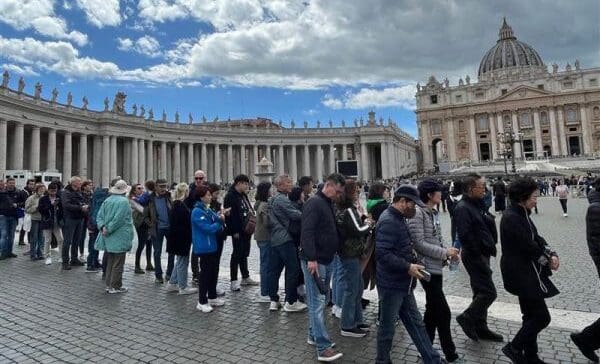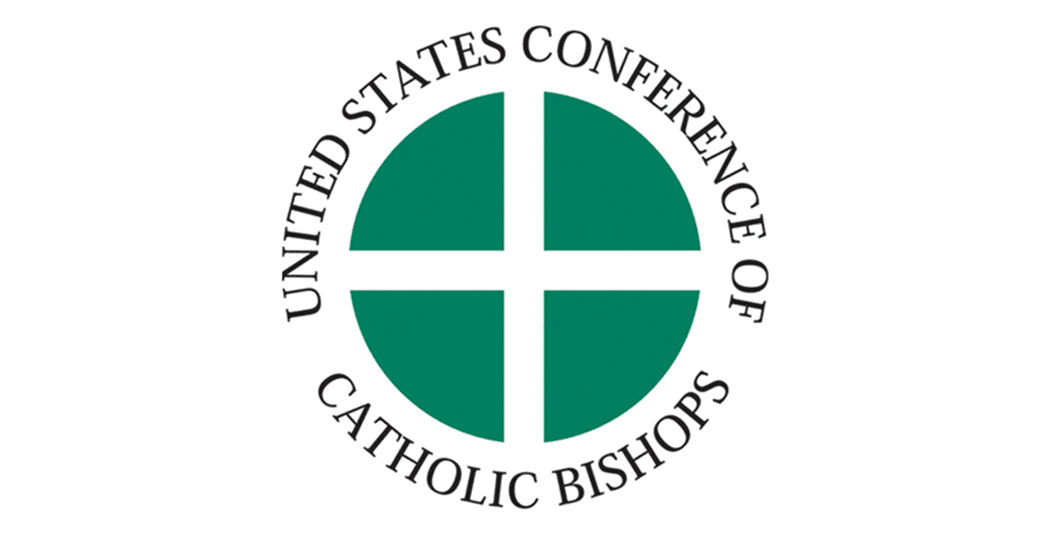Beauty is an evasive idea—in the sense that it is difficult to arrive at its concrete definition. It is much easier to speak of its effects—beauty captivates us, beauty fills us with desire, beauty transforms us—than it is to speak of its specific nature. Nevertheless, certain attributes have emerged, beginning with a classical Greek understanding of beauty, and Christian thinkers throughout history have continued to use these attributes in their own understanding of the subject. The aspects of integrity (integritas), proportionality (harmonia), and radiance (claritas) accompany some of the earliest thought on beauty, and the notion of wholeness of form is at the heart of this basic understanding of what beauty is: that which is flawed, that which is imperfect, cannot be beautiful.
Yet, it seems a Catholic understanding of beauty contains within it a certain space for the unconventional, the strange, and even the shocking. While the classical attributes of beauty could certainly be assigned to much of the glorious Catholic art that has been created across the ages, the scandal of the Incarnation at the heart of the Christian mystery begs a wider scope than the Greek classical view on beauty might be able to offer. But what is this strange innovation in the Catholic understanding of beauty?
It seems a Catholic understanding of beauty contains within it a certain space for the unconventional, the strange, and even the shocking.
Digest on Beauty
This past semester, in a course on the theology of aesthetics, I read with my seminarians an illuminating and fascinating book called Eating Beauty: the Eucharist and the Spiritual Arts of the Middle Ages by Ann W. Astell. In this book, Astell argues that each of the main spiritualities of the Middle Ages—the Cistercian, the Franciscan, and the Dominican, and the spirituality of the Jesuits—receive their charisms, in the mode of a particular key virtue, from Jesus Christ in the Eucharist. These spiritualities, or ways of holiness, serve to restore the God-given beauty of the fallen world. Astell writes: “Given the remedial and restorative quality of the Eucharist, Christ was received under the aspect of different root virtues depending on the interpretation of the first sin…. Thus the one Christ took form (the essential quality of the beautiful) through divine grace and human striving in four different ‘ways’ of holiness during the Middle Ages, each of them aimed at the artistic restoration of God’s likeness in humanity.”1
In Astell’s argument for establishing each of these Medieval spiritualities as an artistic restoration of the imago Dei—as a way of beauty—she uses the aesthetic framework of Simone Weil, who argues for two kinds of “eating beauty”: “There are two ways to eat beauty, according to Weil. One way destroys the beauty of the world and the beloved; the other preserves and enhances it.”2 For Weil, the original sin of Adam and Eve was eating the alluring fruit at which they only should have looked; but, by contrast, the eating of the Eucharist is “a sacramental foretaste of, and guarantee for, that heavenly looking and eating.”3 In heaven, says Weil, where our desire will not be distorted by sin, looking at and eating beauty will be one and the same thing.4

Image Source: AB/Wikimedia. Francis Receiving the Stigmata, by Giotto
Drawing on these two ways of eating, Astell takes up the framework of “apple and Eucharist,” citing the virtue at the center of each Medieval spirituality as a Eucharistic remedy to a particular version of the original sin. (For instance, the virtue at the heart of the Franciscan spirituality is humility, which counteracts the sin of avarice.) Nourished and transformed by the beauty of the Eucharist, the saints restore the beauty of the world in and through the radiation of the beautiful virtues which they have received from the Lord.
In heaven, looking at and eating beauty will be one and the same thing.
The marvel of Astell’s argument here is that, first, it associates beauty primarily and primordially with sanctity: the sanctity of the Trinity, the sanctity of the Eucharistic Lord, the sanctity of the saints, and the sanctity of creation. Secondly, Astell identifies the transformative dynamic of beauty—a dynamic to which both Greek and Christian thinkers have attested—with the transformative and sanctifying dynamic of the Eucharist. We become what we receive. Beauty never simply “lets one be.” If the beholder truly allows himself to be taken by beauty, beauty leaves him lovelier and hungrier for truth, and awakened to the beauty present in the things of creation. So, too, Astell asserts, in referencing Weil, does our Eucharistic Lord eat the one who eats him: “God’s eating of us and our eating of Him in the Eucharist are not destructive of beauty, [Weil] insists, but rather a way to participate in Beauty itself, the same Beauty that expresses itself in obedience to God’s law of charity.”5 The one who receives the Eucharist is unmade, remade, and integrated into the body of Jesus Christ, leaving the eater sanctified, hungrier for the Lord, and hungrier for souls. The one transformed by the Eucharist is zealous to allow the world to be transformed in Christ through his witness.
Perfect Flaws
Now, what is central to Astell’s notion of the beauty of the Eucharist is the Blessed Sacrament’s simultaneous containment of the Christus gloriosus (the glorified Christ in his resurrected body) and the Christus deformis (the suffering, deformed Christ). The Eucharist surely consists of the body, blood, soul, and divinity of the glorified Christ, and yet it also consists of the representation of his Passion and Death. This posits a problem for a classical understanding that considers beauty to be flawless, complete, and perfect. Astell addresses this problem by referencing the work of Carol Harrison on the thought of St. Augustine regarding beauty and revelation. Harrison points to St. Paul’s canticle of Philippians 2: 6-8, which was frequently referenced by Augustine regarding the suffering Christ: “Have among yourselves the same attitude that is also yours in Christ Jesus, who, though He was in the form of God, did not regard equality with God something to be grasped. Rather, he emptied himself, taking the form of a slave, coming in human likeness; and found human in appearance, he humbled himself, becoming obedient to death, even death on a cross.”6

Image Source: AB/Wikipedia. The Body of the Dead Christ in the Tomb, by Hans Holbein the Younger.
These two forms of Christ—the form of God and the form of the slave—are held in tension in and through Christ’s pouring out of himself in his Passion and Death. Harrison asserts, “The absolute form and beauty of God therefore descends to absolute deformity—to death on a cross. His beauty and deformity are held together in forma servi and in forma Dei, so that Augustine often quotes Philippians 2: 6-8 in this context….”7 St. Augustine expands the notion of beauty to include the suffering of Christ, allowing the words of both Psalm 44:3 (“You are the most handsome of men”) and Isaiah 53:2 (“He had no majestic bearing to catch our eye, no beauty to draw us to him”) to coexist in truth.8
This is the theological point at which a merely classical understanding of beauty ceases to suffice. When we eat the beauty of the Eucharist, we eat the deformity of Christ, and literally come to bear his suffering in our bodies (2 Corinthians 4:10). Indeed, Astell points to the stigmata of St. Francis as the “declaratory seal,” which “confirm[s] the life of St. Francis as a divine artwork, a masterpiece to which Christ the Artist lays claim by affixing His wounds as a kind of signature.”9 The beautiful form of the life of a saint is incomplete if it does not include within it the deformity of Christ’s suffering. Just as Christ’s glorified body retains the wounds of his Passion, so must the life of a saint, the via pulchritudinis, contain within it an obedience that suffers unto death.
The one who receives the Eucharist is unmade, remade, and integrated into the body of Jesus Christ, leaving the eater sanctified, hungrier for the Lord, and hungrier for souls.
Deformed and Reformed
This remarkable understanding of personal holiness within the framework of Eucharistic beauty is both disruptive and dazzling. The idea that one’s life is a work of art fashioned by the hands of the Lord awakens a desire in oneself to be spiritually beautiful, and it sheds a refreshing, meaningful, and redemptive light on personal suffering. As a church musician and professor of music, though, I would like to consider this Eucharistic aesthetic framework on the level of artistic practice and vocation. What does this Eucharistic understanding of beauty mean for the arts? How does one approach music-making—in particular, liturgical music—within the framework of the scandalizing beauty of Jesus Christ?
For the dimension of practice, this framework of Eucharistic beauty might mean that liturgical music must continue to keep an openness to musical styles that contain a certain deformity within them. Here, I am speaking of a kind of music that reflects Christian suffering; not that which is stylistically lewd, maudlin, or deliberately offensive, but that which might contain harmonic discomfort, unusual compositional techniques, and a certain amount of unsettledness. It is possible for musical compositions to hold this artistic “deformity” within an artistic glory; from the perspective of visual art, many depictions of the Crucifixion in the Catholic treasury of iconography, painting, and sculpture could be considered proof of this point.
As for the musical treasury of the Church, one could point to the strangely beautiful Tenebrae responsories of Carlo Gesualdo (1566-1613) as an example of liturgical music which contains a palpable element of suffering within it. One can hear the bodily contortion, and almost feel the physical pain of the Lord, in these pieces. It takes great craftsmanship and wholeness of offering for the musician to accomplish a glorious presentation of deformity in his work, but the scandal of Catholic beauty requires an openness to it. Certainly, if the Church does not allow a space for authentic suffering in her art, then the world will take it up on its own terms. Absent Christ, a consideration of deformity and suffering becomes victimization, bitterness, cynicism, masochism, and a hatred of the human form. Without Christ, suffering becomes ugliness. The Church owes the world an un-sanitized Beauty, which is why she leaves room for an honest artistic presentation of suffering.
When we eat the beauty of the Eucharist, we eat the deformity of Christ, and literally come to bear his suffering in our bodies.
For the spiritual dimension—the vocational lives of liturgical musicians—the framework of Eucharistic beauty means that we must live our artistic vocations in humble service: we must always consider the beauty of our artistic offering to be subservient to the beauty of God present in the Eucharist. The beauty of liturgical art is only attendant to the beauty of the Lord, which means that it is also attendant to the beauty of the imago Dei—the beauty of human beings, the ones made in God’s image. As the saints radiate the beauty of the Eucharistic Lord to the people of the world in their charisms, missions, and works, so must our liturgical music compel the faithful to share the beauty they have received in the Mass with the whole human family. Claimed as we are by the love of the Christus deformis, the beauty of the Mass should send the faithful running towards the lonely, the poor, the sick, the abandoned, and the dying—the suffering ones who are most like Christ. Beauty runs its obvious course when it arrives at the corporal and spiritual works of mercy.
Wholly One
It would be tempting to consider the definition of beauty as a Eucharistic reality to be a wonderful but happenstance idea, as simply the identification of two categories with each other that have a lot in common but, at the end of the day, are two separate entities. There aren’t enough words left to me in this article (or in my mind!) to broach this consideration adequately, but I believe such a consideration would be a mistake. It would be far closer to the truth to consider that the beauty of the world, found in nature, art, human construction, and human beings, is a gift from the God who loves us, the one who poured himself out at the Last Supper and on Mount Calvary.
The Christian call to divinization means that we ourselves become gift—become beauty—and take a glorious part in the salvation and restoration of the world. The beauty of the world owes its existence, just as we do, to a Eucharistic reality. Let this be the reason for our art.
Mary Catherine Levri is the professor and director of music at Mount St. Mary’s Seminary and School of Theology for the Archdiocese of Cincinnati, where she teaches a developed music curriculum and directs the Sacred Music Institute. She currently serves as the President of the Society for Catholic Liturgy, and has given lectures on church music for the Archdiocese of Cincinnati, the National Association of Pastoral Musicians, the American Guild of Organists, and the Notre Dame Center for Liturgy.
Footnotes
- Ann W. Astell, Eating Beauty: the Eucharist and the Spiritual Arts of the Middle Ages (Ithaca, NY: Cornell University Press, 2006): 16.
- Astell, Eating Beauty, 5.
- Astell, Eating Beauty, 6.
- See Simone Weil, “Forms of the Implicit Love of God,” in Waiting for God (New York, NY: HarperCollins, 2009), 105.
- Astell, Eating Beauty, 5.
- See also Carol Harrison, Beauty and Revelation in the Thought of Saint Augustine, Oxford Theological Monographs (Oxford: Clarendon Press, 1992), 236.
- Harrison, Beauty and Revelation in the Thought of Saint Augustine, 236.
- Harrison, Beauty and Revelation in the Thought of Saint Augustine, 236.
- Astell, Eating Beauty, 128.


